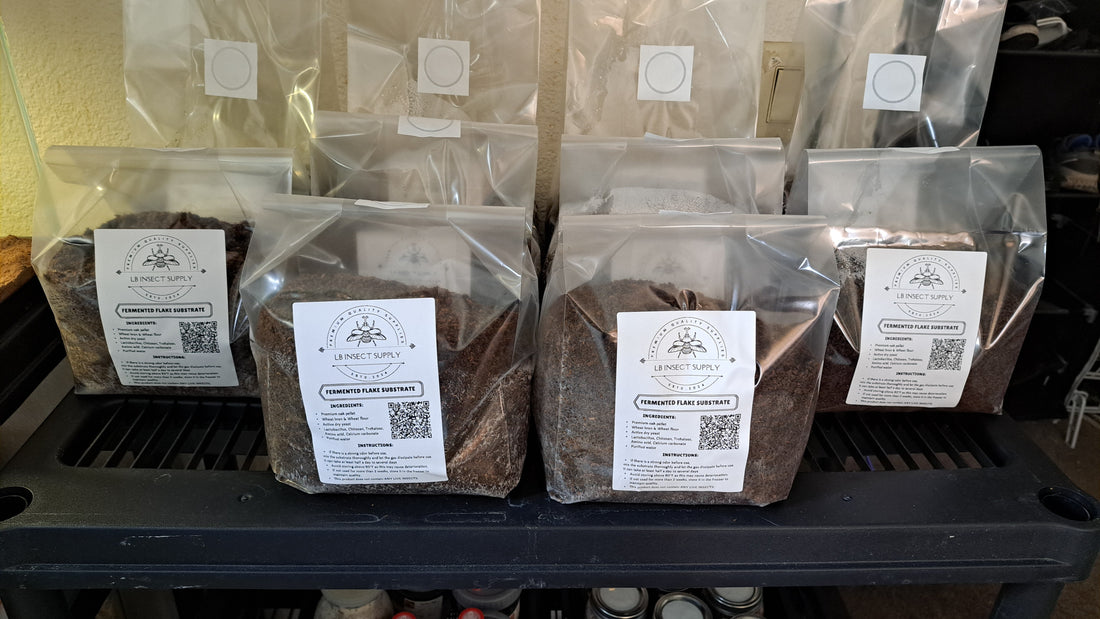 Fermented Substrate
Fermented Substrate
This is the main food source for larvae, and it's commonly called "flake soil" in the hobby.
The type and number of fermentations it goes through determines how and for which species it’s used:
📌 1st–2nd fermentation:
Mostly used for stag beetle larvae.
📌 2nd–4th fermentation:
Best for rhinoceros beetles and flower beetle larvae.
📌 1st–2nd natural fermentation:
Specially used for certain species.
This is made only with pellets and water, no additives, and takes at least 6 months to fully ferment.
It’s a slow but clean process. Kinshi
Kinshi
In the wild, stag beetle larvae feed on white-rotted wood broken down by fungi and bacteria.
Kinshi is a cultured substrate that mimics this environment.
✅ Pros: Often results in larger beetles.
⚠️ Cons: Higher mortality risk if not managed properly.
It’s especially popular among breeders chasing size. Substrate Scoop
Substrate Scoop
A must-have tool when you're transferring substrate.
This is like an Excalibur for breeders—saves time and effort when refilling containers. Boring Stick
Boring Stick
Used to create holes in the substrate or Kinshi, so larvae can easily burrow in when moved.
Super helpful for reducing stress on larvae during transfers. Press Stick
Press Stick
Used to compact the substrate or Kinshi inside the container.
Helps eliminate air pockets and ensures the larvae have firm surroundings to tunnel through. Egg Tongs (Forceps)
Egg Tongs (Forceps)
Essential for safely moving eggs or fragile L1 larvae.
They’re designed to be gentle and reduce damage during handling.
